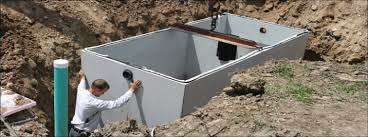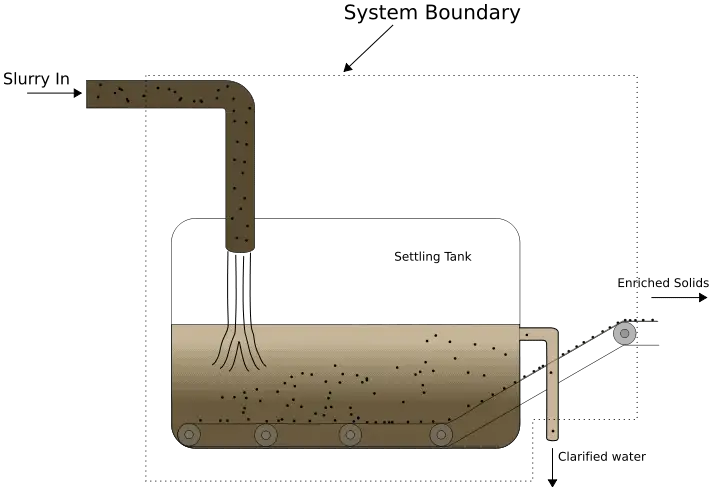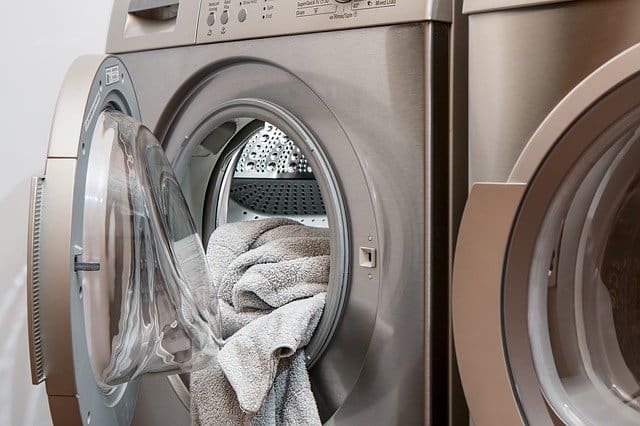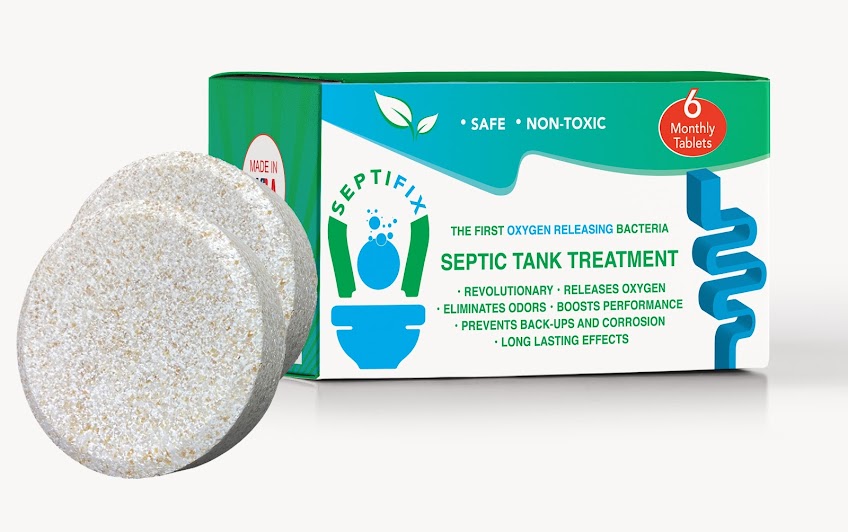How Much Does a Septic Tank Cost? We Cover Complete Septic System Cost- Installation, Inspection, & Maintenance
Septic tank systems are individual on-site, dedicated wastewater treatment facilities. They’re typical in rural areas where public centralized sewer management is not accessible. There are several types of septic systems used across the country, but the most common is the septic tank/absorption field system.
In this particular system, wastewater leaves your home or establishment and travels to your septic tank. Waste stays in the tank long enough for the solids to settle down as sludge and for grease and oils to float to the surface as scum. Specially-designed outlets restrain the sludge and scum, while allowing the relatively clear middle layer – the effluent – to travel to your drain field. Helpful bacteria in the soil digest or remove most contaminants from wastewater before it reaches the groundwater.
How much would it cost you to own a septic system in your property? Generally, the costs of having your own septic system depends on the following elements: Installation, Inspection, Maintenance, and Repair. The first factors that will determine the price of this investment are the size and the type of septic tank. Also, the construction material of the tank (plastic, concrete, steel) factors heavily into its cost.
As a benchmark, a standard-sized septic tank is one that stores 1000 gallons (or 4000 liters) of wastewater and the price ranges from $500 to $700. Down the line, the tank type and size you have will determine the costs for its installation, inspection, and maintenance.
New Septic Tank Installation Costs
The national average cost for septic tank installation falls in the range between $3,000 and $9,000. The cost to install a typical 1,000-gallon tank, used for a 3-bedroom home, for instance, can range anywhere from $2,000 to $5,000, inclusive of the price of the tank itself, which is anywhere between $600 and $1,000.
But before the actual installation of the septic tank, you are required to secure a permit from your local health department. Permit fees usually amount to $300 to $350.
The first step to determining the cost of installing a septic system is to contract a trusted septic professional for consultation and project estimate.
Call Septic Service Pros 1.855-925-0760 For Service or Request a Quote
A good project estimate will include labor fees, typically. Of course, right up there on the top line items in cost is the tank. Here is a quick reference guide:
How Size Of Septic Tank Affects Cost: Average Cost- A quick guide
Here is a quick break down of average costs for a septic tank based on the size of the tank itself. This could be helpful if you are replacing an older septic tank in an existing septic system. Tank Size (in Gallons) Size of House or Establishment Tank Cost 1,000 3
bedrooms $600
to $1,000 1,200 5-6
bedrooms $1,200
to $1,600 2,000 small
building (about 14 occupants) $1,800
to $2,300 3,000 large
building (>14 occupants) $2,900
to $3,900
Use our Septic Tank Size Calculator to find out what size septic tank may be appropriate for your home.
How Construction Type of Septic Tank Affects Cost Of Septic Tank Installation
| Tank Type | Cost |
| Concrete | $750 to $2,000 |
| Fiberglass | $1,600 to $2,000 |
| Plastic | $850 to $1,900 |
Despite the strength and durability associated with steel, metal septic tanks are susceptible to rust and corrosion and will likely be outlasted by a tank that’s made of concrete. Because of this and strict local regulations, steel septic tanks are used less and less these days.
The construction material of the tank determines the number and type of installation equipment required and the type and amount of piping (passages for wastewater from your toilets, sinks, and bathrooms) to and from the tank, your facility, and your drainfield. The minimum septic tank installation charges are somewhere around $2,000 and up. Also, the type of septic system you opt for factors into total cost.
Call Septic Service Pros 1.855-925-0760 For Service or Request a Quote

New Septic Tank System Cost Factors – Differences in Septic System Installation Costs
They total cost of a septic system installation will depend on the complexity of the system you choose and the septic system installer. If you are looking for a local septic tank company Call Septic Service Pros 1.855-925-0760 For Service or Request a Quote
Anaerobic System – This system is relatively simpler as it consists of a pipe coming from the facility to the tank, and a branched pipe traveling from the tank into the drain field. These systems rely on the presence of anaerobic bacteria to digest waste in the tank. Anaerobic systems are typically more affordable to install than its more complex aerobic counterpart. Anaerobic systems cost can range between $2,000 and $5,000 to install.
Aerobic System – This system is a wastewater system that relies on aerobic bacteria (oxygen-loving bacteria) to break down waste in the tank. Because oxygen is not naturally present in a septic tank, this system requires an air pump to aerate the tank and promote the digestion of waste. Aerobic systems typically require multiple tanks or chambers to complete the treatment process. Aerobic systems are much more complicated than anaerobic systems and can cost you anywhere between $10,000 and $20,000 to install.
New Septic Systems: Alternative Septic Systems Types – Average Cost To Install
In this section we will review the cost to install a septic tank or system based on the type of system.Type of Septic System Average Cost Conventional
Systems Conventional Systems Gravity
or Anaerobic $3,500 Pressure Distribution $6,500
to $9,800 Alternative Systems Aerobic
Treatment Unit $10,000 Mound $15,000 Sand
Filter $5,500
to $9,500
Call Septic Service Pros 1.855-925-0760 For Service or Request a Quote
Inspection costs of septic system
Septic tank system inspections conducted annually will ensure that your system remains functional and can prolong its lifespan while preventing serious health hazards. Having your septic system inspected periodically will definitely cost less than replacing or repairing it, thus protecting the value of your property.
Septic tank inspectors should check for a variety of potential problems, including:
- Tank size and how proportionate it is to the facility it is connected to.
- The level of sludge in the tank, which should not be more than 1/3 of the tank’s total volume.
- The volume of wastewater flowing through the drain lines and into the drain field.
- The distance of the tank and drainfield from wells, streams, and other similar water sources.
- Signs of liquid waste on the ground surface, an unsanitary condition possibly indicating an overloaded system.
Depending on the location of your property, having your septic system inspected may cost around $100 to $250. Getting your tank pumped usually costs between $300 and $400 (could be more if provider charges by the gallon). For this, your tank will need to be uncovered (dug up) and this may cost an additional $50 to $250, depending on the depth of the tank. Yet, these are still substantially better amounts compared to the cost of needing to replace your drainfield for $2,500 up to $10,000.
Septic System Maintenance Costs
The Environmental Protection Agency (EPA) recommends that all septic systems be maintained regularly in order to effectively prevent failure. To prevent sewage buildup and backup, sludge and scum need to be removed through periodic pumping of the septic tank. Regular inspections and pumping as necessary, generally every 3 to 5 years, are the best and most cost-effective means to keep your septic system in good working order.
LABOR COSTS – Other factors that affect the cost
Having your septic tank pumped is an essential element of septic maintenance. There are professionals who can do this job efficiently and charge around $150 to $250 per visit. Although pumping the tank is important, doing so too frequently can destroy the good bacteria that promote the digestion of sewage.
Too much solid waste moving into the drainfield can result in unwanted weed growth and sludge-like layer. To avoid this biological growth, it is advised to do this maintenance work once in every 3 to 5 years.
Another important component of septic tanks that require checks and maintenance are the baffles. These are tube-like metal fixtures, each one situated near the tank’s inlet and outlet pipes. Baffles prevent water from exiting the tank prematurely or too rapidly. Because baffles are metal, they are prone to rust and need to be replaced periodically. Fitting and replacing new septic tank baffles may cost anywhere between $200 and $400.
Also, over time, the distribution box may fail to work correctly and will need to be replaced. The cost of installing a new distribution box would cost around $600 to $800.
There is also the matter of the pipes that transport solid waste and wastewater to the septic tank. These pipes often get clogged over a period of time. In order to clear the pipes and restore normal flows, you need to pay around $50 to $250 in addition to the regular pumping cost.
Different septic systems require maintenance in varying frequencies. The annual maintenance cost of a new drainfield septic system will range anywhere between $30 and $500. Over time, you will be need to pump out the solid waste accumulation. The conventional gravel septic systems need to be pumped out once in every 1 to 3 years. If what you have is a peat filter system, the annual maintenance charge can go up to $1,700.
A system that is poorly maintained is one of the main reasons behind high repair and/or replacement costs. Replacing a broken pipe is considered to be one of the least inexpensive repair works on septic systems. Otherwise, major septic repairs can cost you anywhere from several hundred dollars to a few thousand. An estimated $1,500 to $3,000 in repairs can be avoided with regular maintenance.
Signs of a Failing Septic System
The first indications of a failing septic system may include slow draining sinks and toilets, gurgling noises within the plumbing, sewage odors inside your home or facility, consistent drainage backups, or bacteria in the well water. If you observe some or all of these symptoms, go through your property for a more thorough check.
Check your drainfield for unusually strong foul odors. When untreated effluent seeps into the surrounding soil, gases from the decomposition process reach the surface and are easily distinguishable. Sewage odor anywhere on the property is a clear indication of a serious problem. The area where the odor is strongest will point to the location of the failure in your septic system. Once pinpointed, pay attention to visual cues, as well.
Typically, the most visibly identifiable sign of a septic failure is lush patches of grass or vegetation. If you spot areas wherein the plants are flourishing much more than other areas, this is a valuable clue. This indicates that the effluent may be seeping in and around that particular area, fertilizing the foliage. Septic effluent acts as a strong fertilizer due to the high concentration of dissolved nitrate and phosphate. These vibrant patches of growth may actually point to a leak. Unfortunately, it may also indicate an advanced failure of the system that requires costly repairs.
If you notice the presence of pooled effluent on the surface of the yard, this is another visual indicator of a septic failure. If you see this pooling, it means the surrounding soil has become saturated with untreated wastewater. The odor will, expectedly, be overwhelming. This situation presents a serious health hazard for humans, animals, and the environment, and you are best advised to immediately consult with your local licensed septic professional to help make an accurate assessment. Excessively saturated soil around the septic tank can be quite weak and may eventually collapse.
How Often Should You Clean Your Septic Tank?
Besides that pumping your septic tank is crucial, knowing when to have it done is just as important. Septic tanks collect and process wastewater and solid wastes, while managing the effluent out into the drainfield. Over time, the solid wastes build up and need to be cleared out. If the solids are not pumped out, they can be forced out of the tank and clog your drainfield, causing serious malfunctions.
Under normal conditions, your septic tank should be pumped every 3 to 5 years, depending on the tank size and the number of people in your home or business facility. If pumping is done religiously and in a timely manner, you are potentially saving yourself from costly septic repairs over time. While it is possible for you to pump your own septic tank, this may not be the best option.
The sludge that’s pumped out of the tank has to be stored for transport in appropriate containers and disposed of under stringent safety procedures. It is easier and more cost-effective to have septic tank pumping done by a professional with the right tools and storage equipment to safely handle sludge and scum for disposal.
While pumping or inspecting your septic system, your hired pumping professional may identify other issues. Pumpers are able to effect minor repairs, such as repairing or replacing a broken baffle. It is recommended, however, that you get a second opinion for any repair estimated to cost more than $200.
How Often Do You Need to Replace Your Septic Tank?
The life expectancy of a septic tank depends largely on its material of construction.
A steel septic tank is susceptible to rust corrosion, further aggravated by soil acidity, quality of steel used in fabrication, and coating integrity. A steel septic tank that’s more than 15 or 20 years old is likely to have already rusted to the point of having lost its baffles and perhaps even a rusted-out tank base – conditions that can be recognized during septic tank cleaning and inspection. A steel septic tank cover is likewise prone to rusting around the same time spans – that is, until someone carelessly drives over it.
On average, septic tanks made of plastic or fiberglass last a bit longer, with an average lifespan of 30 to 40 years. Even though plastic septic tanks are more affordable and quite reliable, they do come with certain disadvantages. Because of the lightweight material, it is possible that a plastic tank could “float” in areas with a high water table. Wet soil conditions may cause them to rise, shift, or even tilt. This can result to costly structural and leakage issues.
A concrete septic tank can last up to 40 years to virtually indefinitely, making it the longest-lasting option among septic tanks. However, poor quality concrete or acidic ground water may result in the deterioration of baffles or other tank components. Also, concrete septic tanks are a little more expensive to install due to the need of more and specialized equipment and manpower.
Needless to say, though, taking care of your septic tank will extend the life of the next, more costly half of any onsite wastewater treatment system: the drainfield (also referred to as absorption system or leach field).
How Much Does A Septic Drainfield Cost
Unfortunately, there’s usually no repair for a failed drainfield. You will most possibly need to replace some or all components of your septic system.
Signs that a new drainfield is necessary are not easy to ignore: you will likely notice pungent odor and wet or consistently soggy patches in your current drainfield. Pay attention to these warning signs and promptly seek professional advice.
The last thing you need is for the septic system to fail and have effluent back up into your home or facility. Beyond the inconvenience, failing drainfields can contaminate ground water, affecting drinking water supplies and potentially causing illness all around. If your drainfield is near a water source, contaminants can cause algae growth in lakes and ponds.
The price of replacing your drainfield depends largely on soil type – drainfields do not need to be large if your property has porous soil conditions. Your property will require a bigger absorption field if what you have is soil that is less porous. If your drainfield is in a section of your property that is inaccessible and trees, fencing, or other obstructions are present, expect these to add to your costs as these need to be removed. You will likewise need to factor in the cost of replacing the turf in the area or planting new grass seed after the drainfield work is done.
Though costs may vary depending on the drainfield’s size, surrounding soils, and local permit fees, you may expect to shell out anywhere between $5,000 and $20,000 for replacement of a drainfield. The drainfield is the most expensive component of the septic system.
Remember, the total septic tank system’s cost can be significantly reduced if the system is constructed, installed, and maintained adequately and properly. Conservative water usage (meaning, diminishing wastage) in your home or business facility can also help to improve the efficiency of your septic tank.
It has been observed and concluded that the lack of adequate maintenance, the neglect to pump periodically, and the abuse of your septic tank as an indiscriminate garbage bin are some of the factors that can greatly diminish the service life of your septic tank. Simply follow septic system maintenance guidelines in order to optimize increase its performance and you can rest assured that your tank will easily last for 40 years. Or even more.
Visit our State Directory For Local Septic Service Providers
https://homequicks.com/septic-tank-costs
https://www.zillow.com/blog/cost-to-install-septic-system-150191/
https://www.homeadvisor.com/cost/plumbing/install-a-septic-tank/
https://homeguide.com/costs/septic-tank-system-cost
https://www.co.thurston.wa.us/health/ehoss/pdf/pumping_guide.pdf
https://www.thumbtack.com/p/septic-inspection-cost
https://www.homeadvisor.com/cost/plumbing/clean-septic-tank/
https://www.fixr.com/costs/septic-tank-cleaning
https://inspectapedia.com/septic/Septic_System_Life.php
https://www.angieslist.com/articles/clean-it-or-replace-it-why-septic-tank-pumping-crucial.htm
https://www.epa.gov/septic/how-care-your-septic-system
https://budgeting.thenest.com/much-cost-new-leach-field-24104.html











